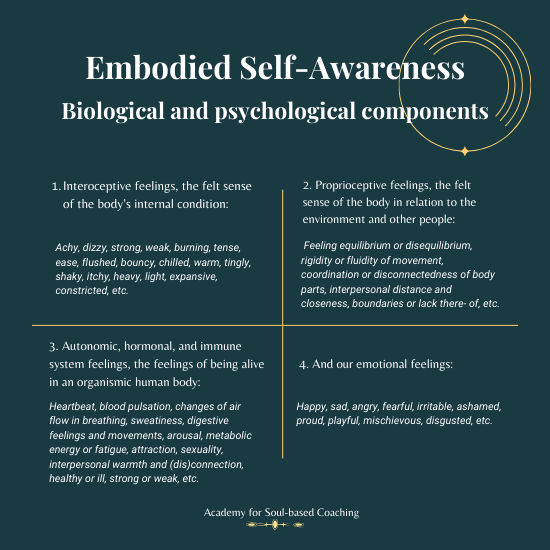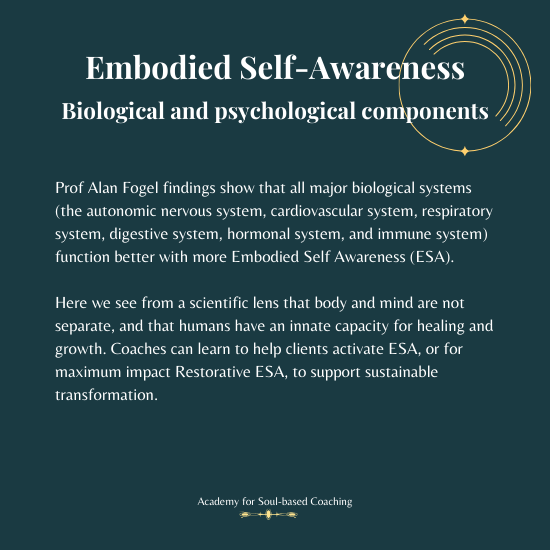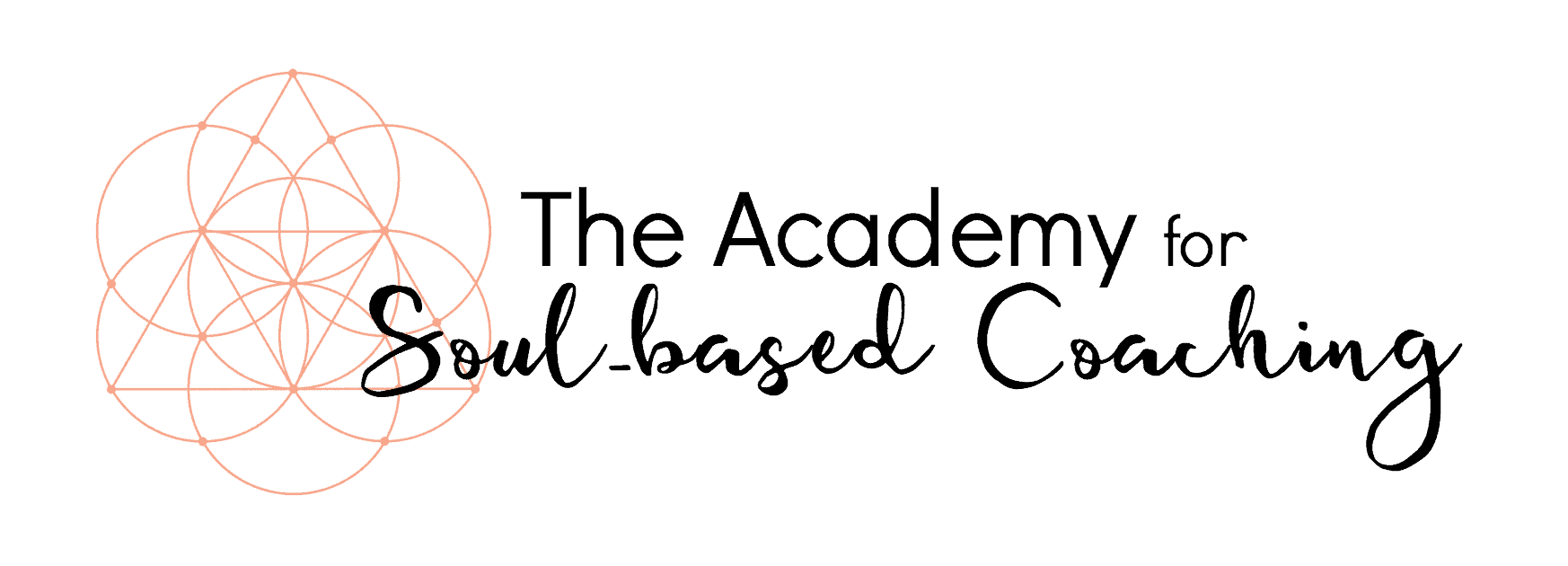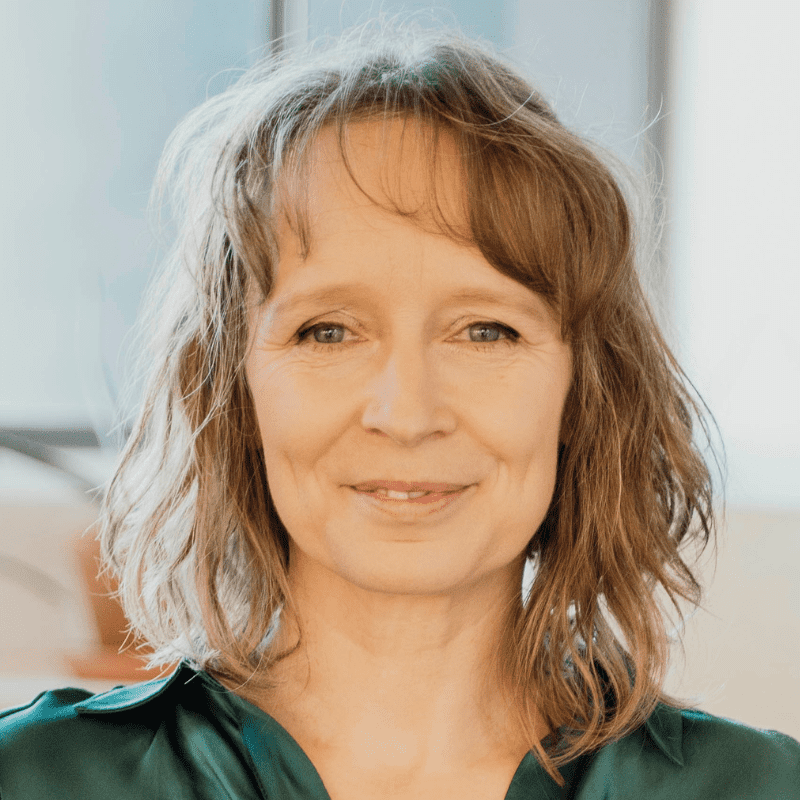Presence is the starting point of every Soul-based Coaching encounter, session and training.
It is not just a mental checkpoint for us. It is an actual, embodied practice that has proven itself over the years. And we are happy to see that now, neuroscience can help us understand why this is such an essential part of any meaningful conversation. And even more so in a coaching conversation.
How Presence happened for us
I didn’t have the facts that are available now in 2016, when I started to bring my 10 yrs of coach training experience online. But our emphasis on presence didn’t happen by accident. It was synchronistic rather than a decision I made from logic alone.
When I’d had to leave my corporate career behind because of immune system issues, it took time to find a place to start contributing to the world again. And when I got to that stage, I was asked to offer the coach training I had previously ran again.
I realised that the only way I could do that, was to allow the things I needed in that space. So that I could experience spaciousness and energetic nourishment – while offering high quality training. Yes, I had seen the benefits of these practises on my spiritual path. But without this breakdown in my health, I wouldn’t have had the guts to bring them into a professional context.
The changes I made
Embodied presencing was part of what I integrated in the course design. Alongside the decision to offer the training online to take out my need to travel. (This was all pre-pandemic.) The course design also included various ways of tending to our nervous systems. So that the training itself supported a social setting, geared towards learning new and sometimes challenging things.
At the time, I thought about how odd this would be for my usual corporate audience. But I also realised that I wouldn’t be the only person to benefit.
Which was of course true.
In fact, I was very happy to see that not only did it help people settle and learn, it also helped the coaching process to go deeper.
The presence that makes the difference
According to neuroscientist Dr. Amanda Blake, presence is simultaneous attuned attention: attention to all aspects of your experience at the same time while also being attuned with another person.
Both in our Academy and in Amanda’s research, people consistently report that presence:
- brings connection
- builds trust
- brings more calmness
- gives access to wisdom and emerging information (information that is new to the client’s system)
- and opens up possibilities that weren’t there before.
All vital aspects of fruitful coaching conversations if you want sustainable – lasting – change. But why is that so? What are the neurological reasons for these effects that we have seen consistently?
What happens when you become present – from a physiological and neurological perspective
When we are present with all aspects of our own experience, we are aware of what is happening within us and around us. Prof. Alan Fogel calls this Embodied Self-Awareness (ESA). His findings show that all major biological and emotional systems function better with Embodied Self-Awareness. (Take a moment to process this. Our major biological processes work better when we simply bring our (judgment free) attention to our inner bodily experience.)

 .
.
Usually, we filter out a lot of that information to favour our logical, conceptual brain. That is what our Western culture has socialised us to do, because logic and reason have been thought to be the superior traits for guiding human behaviour.
We know better now in many ways.
What neuroscience starts to explain is that the more aware we are of our embodied experience in-the-moment, the more access we have to information that lies outside of the conceptual domain (where logic and reason rule).
And that information outside of the conceptual brain is essential for our clients if we want to see sustainable transformation.
Why is that the case?
The parts of our brain and neurology at play
Let’s look at the parts of our nervous system and brain that are engaged with presence and Embodied Self Awareness:
🧠 Our procedural or implicit memory, the part of our brain that helps us walk, ride a bike, that we then don’t have to think about again. This part of the brain is important in all learned behaviour, including the way we respond in social situations, and for example our patterns around conflict or self-care. Neuroscientists used to think this type of memory wasn’t changeable. In which case, all you could do was generate alternatives. (This brought on the mainstream therapeutic and coaching approaches that lead to inner conflict amongst the old and new neurologically embedded behavioural possibilities.) In Symbolic Modelling and Soul-based Coaching, we’ve know for 35 years that this part of our neurologic make-up can change through working with client-generated embodied metaphor [link coming with future blog post]. And now, neuroscience supports our experience. In their terminology, when you want sustainable transformation, you need to:
-
- activate the old patterns,
- invoke a disconfirming mismatch from the client’s system’s logic,
- and have the client viscerally experience and anchor a new pattern.
It sounds like a handful, but embodied metaphor can do all of this in a neat little package when you know how to direct the client’s attention.
🧠 Our ‘default mode network’ or ‘empathic system’ – this is the part of the brain that is not engaged in ‘task-mode’. Together, these are the two brain circuits that alternate activity in your brain. You can either do one or the other: focussed task attention or ‘not that’ or ‘everything else’. The empathic system runs for example our ethical reasoning functions, our ability to navigate an emotional and relational world, gives us judgement, makes us reasonable, appreciates complexities. It is the network that gives us access to creativity and emergence, where we can let our attention drift and where the conscious and subconscious mind can meet.
Einstein said that ‘A problem can not be solved from the paradigm where it was created’. Staying within a client’s (or your own) conceptual domain severely limits the possibility for lasting changes that fit the wider body, mind & soul system of the client.
🧍🏽♀️ The distributed nervous system throughout our body, where psycho-biological learning happens, which is where we heal and grow. We need that on board for change to become possible.
🌟 (and I would add: our connection to Soul, Source and our collective field, but that’s slightly outside the scientific lens, because how would you measure and analyse the unknowable?)
The scientifically proven results of presence in coaching
Amanda Blake’s research shows that when you learn to be aware of more of those parts of your experience within and around you, you receive more information on more channels (supported by the above parts of our physiology).
What her research has also shown is that when you develop embodied self-awareness, a host of other experiences come with that, like:
- Flourishing; in other words, your satisfaction with life and your overall sense of well-being.
- Resilience and adaptability, so the ability to bounce back from stress or to negotiate change.
And there are also promising scientific correlations (to be confirmed by further research) that when you build embodied self-awareness:
- Empathy can deepen
- Connectedness grows and
- The ability to manage conflict increases.
What we get out of increasing our presence
Being present with ourselves increases the quality of life that we experience (even though it also requires us to look at the hard parts). All major religions have ancient mystic paths that point to this. Now science shows it too.
From a purely professional perspective you want to increase your ability to be present because:
The extent of your presence with others, is directly related to your own capacity to be present with yourself. Literally, physiologically and scientifically proven. Or, differently put:
Your ability to be present to what is within you, is an important determiner for how well you can be present with a client, which in turn influences the kind of results that can happen.
Why continuous practise is a good idea
Our capacity to be present is not a ‘yes, I know how to do that’, badge you earn, tick the box and never worry about it again (like the shoe lacing diploma you got in kindergarten).
You have a certain capacity to be present. Think of it as the muscles needed for this particular state of being. That capacity can change day-to-day depending on how you feel and what is happening in your life. And there is the in-the-moment experience of being present. These are two wildly different things: the robustness of the circuitry you built and whether you use that circuitry or not.
Especially when life is in turmoil, or when things are changing, we need to pay close attention to our own capacity and experience of being present with ourselves.
And let’s be clear, life is changing hard right now. Has been since 2019. For all of us. Ongoingly. And aside from the collective sh#t that is going on, we also have our own ups and downs (that both require extra presence!) For me, I’ve been noticing how much extra presence the process of (peri)menopause takes while it weaves itself through my life with chronic illness.
We need to keep practising that capacity to be present, because our world is set up to distract and capture our attention away from presence through algorithms, the need to make money (aka capitalism) and drama.
With practice, you grow both your capacity for presence and you benefit from your presence with yourself.
How you can grow your capacity to be present
To grow your capacity to be present:
Choose a practise that helps you attend to these inner sensations and experiences, without going into the story about what they mean. Train yourself in noticing what is, and noticing what happens when that is all you do.
For example, meditation can work well, but there are countless forms of meditation. A meditation that guides you into a certain state or helps you change or attune your energy field can be a powerful resource. However, that kind of meditation doesn’t train your capacity to be present to what is.
Examples of practises
🌿 This guided meditation to Hold Space for yourself.
🌿 Set an alarm for 3 minutes and practise staying present, moment-to-moment, with:
-
-
- your physical sensations
- (emotional) feelings and
- the way thoughts can pop up (and may attempt to lure your attention with them).
-
A simple mindfulness practice, of which there are many more.
🌿 Nature walks – without a podcast – where I smell the forest, hear the birds, feel the wind on my face and feel the earth beneath my feet is one of my favourites.
🌿 5 Rhythms dance is another personal favourite. Or paint, draw, sew, chop wood. You can choose your own medicine.
And when you enjoy practising with someone, I suggest a simple Holding Space exercise, which is great for practising simultaneous attuned attention. If you want some guidance on that, come join our *free* 6 Guidelines – How to Hold Space for Transformation workshop.
The most important thing to realise is that it’s often easier to think about presence than it is to practise presence, and that every minute counts 🙂
I’ve been practising meditation as part of my spiritual practise for over 30 years. But when life is intens for whatever reason, I still need to remind myself to consciously bring my attention to me. I am very grateful that my work, both in coaching and teaching, has presence practise built into it.
In conclusion
Presence is one of those topics that you can think and read about as a perfect way not to go there.
If you like, take a moment right now, notice your body and where it touches your chair, or where your feet touch the ground.
Pause.
And then muse on what you would like to have happen when it comes to presence and the way you support your people.
When you want a proven methodology for sustainable transformation, our Soul-based Coach Certification program may be for you.
We support the coaches, therapists and healers who want to BE THE CHANGE. It’s for you if you want to help undo the power-over paradigm in the coaching industry, create more wellbeing and get better results.
We help you:
- Make presence and Holding Space, your lasting foundation.
- Move towards the better future in a way that is resonant with that future, and notice where the old paradigm holds you back.
- Make embodiment & Soul even more important than Analysis, Ideas & Doing. The lasting results come surprisingly quickly.
- Allow both science and the Mystery of life to support you and your clients. All powers activated.
- Consistently evoke the field of Restorative Embodied Self Awareness, the neurological ‘holy grail’ for sustainable change, by working with the inherent power of client-generated metaphor.
- Dare to let go of our collective addiction to doing on your client’s behalf, and instead, learn to support the client’s system to create the changes it needs, in 100% alignment with itself and its higher purpose or deepest knowing.
- See the Soul-led change for your clients ripple out into our collective world, inspiring and activating the people around them. Your coaching does make a difference for all of us.
Curious? Book an exploration call here, we’re happy to answer all your questions.



0 Comments